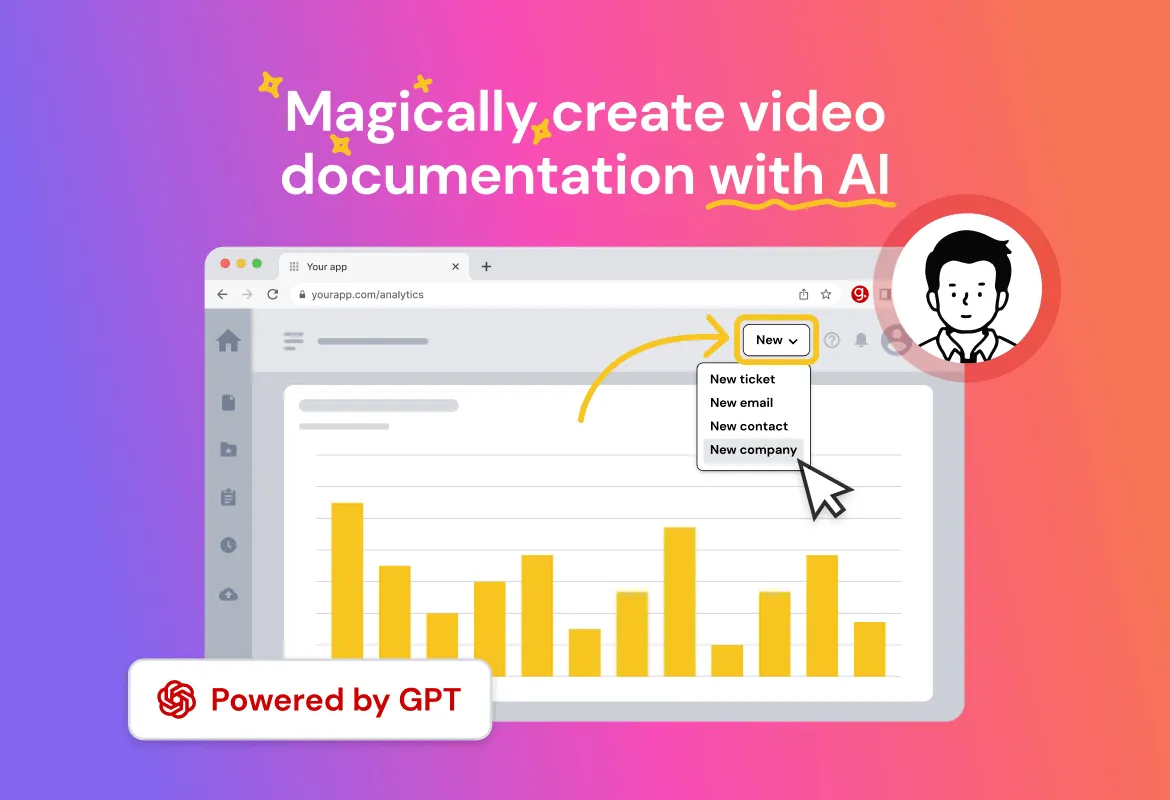How to Improve Communication With Customers Through Video Training
Learn how video training revolutionizes communication with customers. Adapt or lose out.
Published February 18, 2024.

Are frustrated clients leaving you behind? Clear and compelling communication with customers is critical for success. People crave personalization. According to a Zendesk report, 6 in 10 consumers appreciate when they receive tailored recommendations.
With video training, you can help your employees learn how to deliver the message to your clients in a meaningful way, creating a unique and memorable experience. That's why we've created a guide you can use to improve your customer communication.
Why Effective Communication With Customers Is Crucial
Efficient customer communication is crucial because it builds trust and improves the overall client experience. It can increase satisfaction, leading them to do more business with your company. It also gives you the power of word-of-mouth marketing, as they'll talk to their friends and family, possibly recommending your product.
Customer Communication: Modern Approaches vs. Traditional Methods
Traditional approaches to communication with customers include face-to-face talks and phone calls. Email, while still used, is in between conventional and modern.
On the other hand, modern approaches include omnichannel communication through social media, live chatting on websites, and video calls to reach a worldwide audience. They're more engaging, which reduces customer churn.
Note: According to a TCN consumer survey, 40% of customers cited “multiple methods for communicating” as the most essential feature of a company’s customer service department.
One of the common ways to combine different communication channels into your strategy is through video conferencing tools. This way, clients can engage in whatever way they see fit, and however it works for them.
Engaging Customers, Building Connection: Power of Video Training
Video training is becoming increasingly popular for improving communication because it's a dynamic and engaging way to deliver information. It improves understanding and connection to the presenter by conveying tone, body language, and visual cues that text messages lack.
Note: With guidde, you can easily capture what you're doing on your screen to create effective how to videos for your training. You can also add callouts, annotations, and highlights to emphasize key points.
Tailoring Content to Engage and Educate Customers
To tailor content to a diverse audience, you can segment your customers and create specific targeted content that addresses their unique needs and preferences.
Including storytelling techniques makes the content relatable and memorable. Plus, you can try quizzes, polls, and specific calls to action to encourage active engagement with customers.
Benefits of Adopting Video Training
- Improved knowledge retention: Videos effectively engage multiple senses, boosting information retention compared to text-based learning. Engaging and well-produced videos make dry topics more attractive, further aiding recall.
- Standardized messaging and diverse audiences: Whether you have a national or global audience, video allows you to deliver a unified message while resonating with various cultures and preferences.
- Targeted skills development: Identify specific communication skills and scenarios relevant to your industry, like customer service. High-quality, clear, concise video content delivered on user-friendly platforms encourages employee participation and knowledge retention.
Challenges When Adopting Video Training
Employee Resistance:
- Emphasize the "why": Showcase how video training provides clear benefits over traditional methods, like improved engagement, knowledge retention, and accessibility.
- Pilot programs: Start with small programs to introduce video training gradually and demonstrate its effectiveness.
- Employee feedback: Practice employee enablement by collecting and address their concerns to build buy-in and improve future iterations.
Technical Constraints:
- Consider your needs: Not all video training requires high production values. Assess your needs and explore DIY tools or even screen recordings for less complex content.
- Microlearning: Break down content into shorter, bite-sized videos that are easier to produce and consume.
- Use external resources: Partner with educational institutions or training providers who offer video production expertise.
Accessibility:
- Transcripts and closed captions: Make all videos accessible for those with hearing impairments or language barriers.
- Multiple formats: Offer alternative formats like text summaries or audio recordings for individuals with different learning styles or disabilities.
- Accessibility standards: Ensure your video content meets relevant accessibility standards like WCAG 2.1.
From Passive Viewing to Active Engagement: Boost Your Customer Communication
In my career, having video training has been significantly helpful, both as someone who has taken and produced it. When producing a segment, I'm also teaching myself more about the topic. Video adds a compelling visual element that enhances learning, making it an important tool for company education.
If you're sold on using video training to improve communication with customers, guidde can help you create it. It generates voiceovers that explain what's happening on screen, improving information retention compared to text-based learning.

